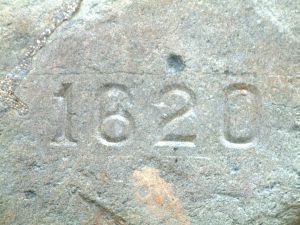Definitely one of the most important symbols of the U.S., Plymouth Rock was the place where the Plymouth Colony was founded sometime in 1620.
This site would soon become what is known today as the United States of America. To preserve its value and importance to the country, it is currently located in the town of Plymouth in Massachusetts.
Let’s have a closer look at this special symbol and other interesting details about it including how much Plymouth Rock weighs.
The Weight of Plymouth Rock
How much does Plymouth Rock weigh? According to reports, the original rock was believed to weigh somewhere around 9,100 kilograms or about 20,000 pounds.
As time passed by, portions of the rock were taken away slowly by various people to be bought and sold.
Nowadays, only about 1/3 of the original size remains, which will significantly reduce its weight to somewhere close to 4 tons or 8,000 pounds.
Its weight may have diminished, but its value and importance to the country will always be great.
Additional Information and Other Highly Relevant Details
People can actually find the rock within the National Historic Landmark called Cole’s Hill. Sometime in 1774, the rock was cut in half when the citizens of Plymouth decided to relocate it.
The lower part was then left at the wharf, while the upper half was transferred to the meetinghouse within the town. In 1834, the upper part was relocated once again, this time to the public museum called Pilgrim Hall.
Later on, the Pilgrim Society then decided to form a Victorian canopy to house the lower part of the rock that was left at the wharf.
Charles Howland Hammatt Billings designed the structure in 1859. The construction was finished in 1867.
After that, the people involved in the project returned the upper part of the rock from Pilgrim Hall back to its original location together with the lower part.
The rock was then carved with the number “1620,” to mark the date of the historic disembarkation of the Pilgrims.
The renowned landscape architect Arthur Shurcliff led another project that improved the condition of the rock in 1920. At that time, the care and control of this historic symbol was assigned to the Commonwealth of Massachusetts.
Nowadays, significant parts of the original rock can be found in two important places in the U.S., namely at the Smithsonian’s Patent Building as well as in the Pilgrim Hall Museum.
Today, the Commonwealth of Massachusetts’ Department of Conservation and Recreation is in control and responsible for the rock.


